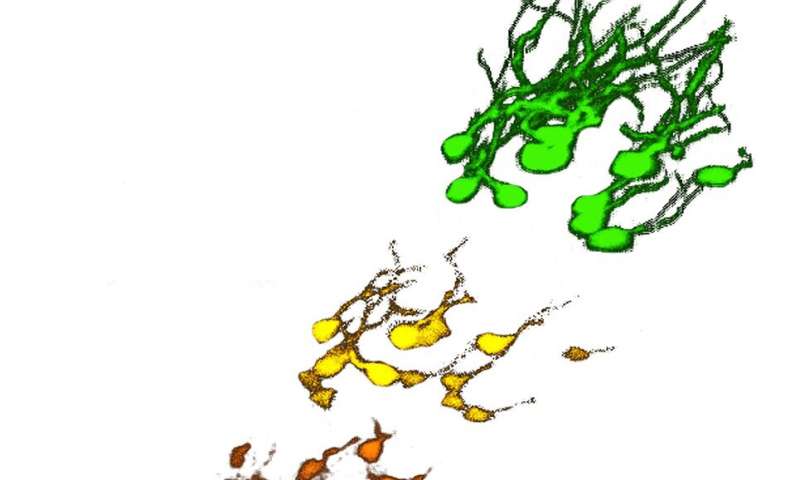Brain stem cells divide over months

Stem cells create new nerve cells in the brain over the entire life span. One of the places this happens is the hippocampus, a region of the brain that plays a significant role in many learning processes. A reduction in the number of newly formed nerve cells has been observed, for example, in the context of depression and Alzheimer's disease, and is associated with reduced memory performance in these conditions.
From stem cell behavior to the activity of genes in individual cells
In a study published in Nature Neuroscience, the group around Sebastian Jessberger, a professor at the University of Zurich's Brain Research Institute, has shown that stem cells in the hippocampus of mice are active over a period of several months. The researchers, led by Ph.D. candidate Sara Bottes and postdocs Baptiste Jaeger and Gregor Pilz, employed state-of-the-art microscopy and genetic analyses (using single-cell RNA sequencing) of stem cells and their daughter cells to analyze the formation of new nerve cells. This enabled them to observe that specific stem cell populations are active over months and can divide repeatedly. This had already been suspected in earlier studies, but this is the first time there has been direct evidence. The researchers have also been able to use single-cell RNA sequencing of stem cells and their daughter cells to demonstrate that stem cells with different division behavior (few cell divisions as opposed to long-lasting stem cell activity) can be differentiated on the basis of their molecular composition and expression of genes.
Harnessing stem cells for therapeutic purposes
"Combining two modern methods—two-photon microscopy and single-cell RNA sequencing—has enabled us to identify precisely the stem cells that can divide over the course of months," explains Jessberger. He adds that the evidence they have now presented of long-lasting stem cell division has implications for future therapeutic approaches: "We now know that there really are stem cells that divide over a period of many months. Single-cell RNA sequencing gives us our first insight into what genes are important in terms of the division behavior of individual cells."
The new findings will form the basis of future endeavors to investigate in detail how specific genes control the activity of stem cells. Jessberger sums up the next research objectives: "Imaging and single-cell RNA sequencing have given us completely new insights that we'll now use to be able to systematically regulate the activity of certain genes in the future. Since we now know that there are stem cells that can divide over a longer period, going forward we want to try to increase the division activity of these cells and thus the formation of new nerve cells, for example in the context of neurodegenerative conditions such as Alzheimer's disease."
More information: Bottes, S., Jaeger, B.N., Pilz, GA. et al. Long-term self-renewing stem cells in the adult mouse hippocampus identified by intravital imaging. Nat Neurosci (2020). doi.org/10.1038/s41593-020-00759-4





















